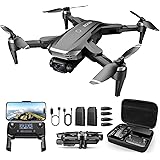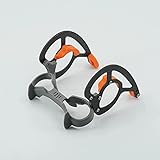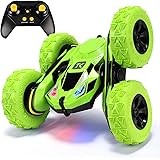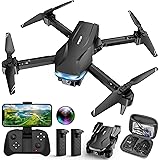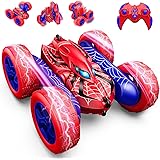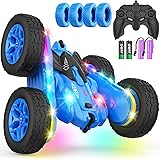Have you ever wondered about the origins of modern drone flying, particularly the unique charm of the tri copter and early FPV experiences? The accompanying video provides a fascinating, albeit silent, glimpse into a Tri Copter FPV setup from 2014, showcasing a period when drone technology was rapidly evolving. For many enthusiasts, this era represents a significant benchmark in the journey of multirotor development and first-person view piloting.
The world of remote-controlled aircraft has seen remarkable advancements over the last decade. Back in 2014, while quadcopters were gaining immense popularity, the tricopter offered a distinctive appeal. This three-rotor configuration presented unique challenges and advantages that are still appreciated by a niche community today, making it a subject worthy of deeper exploration for anyone interested in drone history or alternative designs.
Understanding the Tri Copter: A Unique Multirotor Design
Unlike the more common quadcopter, which employs four motors for thrust and yaw control, the tri copter utilizes only three propellers. This specific arrangement requires an innovative solution for yaw control, the ability to rotate the aircraft left or right on its vertical axis. Typically, one of the rear motors is mounted on a servo-controlled pivot mechanism. This servo tilts the motor, effectively changing its thrust vector and allowing precise yaw adjustments, a mechanical elegance often celebrated by builders.
The Y-shaped frame is characteristic of most tri copter designs, with one motor at the front and two at the rear. This layout often contributes to a more streamlined and sometimes lighter airframe compared to a typical X-frame quadcopter. However, the reliance on a single servo for yaw introduces a potential point of mechanical failure that is not present in fixed-motor quadcopters, where yaw is achieved purely by differential motor speeds. Despite this, the distinct flight characteristics and the challenge of building such a machine have always appealed to a dedicated segment of the drone hobby community.
The Thrill of FPV: Experiencing Flight from the Cockpit
First Person View (FPV) flying is what truly transforms the drone piloting experience from a ground-based observation into an immersive adventure. By transmitting live video from a camera mounted on the drone to a pair of goggles or a monitor, pilots are given the sensation of being inside the aircraft itself. This technology allows for incredibly precise maneuvering, exhilarating high-speed flight, and a perspective that was once the exclusive domain of manned aircraft.
In 2014, FPV systems were already quite robust, though they differed significantly from today’s offerings. Analog video transmission, typically on 5.8 GHz frequencies, was the standard, often accompanied by noticeable static and limited range. Despite these limitations, the feeling of soaring through the sky and navigating obstacles from a bird’s-eye view was, and remains, incredibly captivating. This immersive element has fueled the growth of FPV racing and freestyle flying, turning drone piloting into a competitive sport and an artistic expression.
Drone Technology in 2014: A Historical Context for FPV and Tri Copters
The year 2014 stands as a fascinating epoch in drone development. It was a time when open-source flight controllers like the MultiWii, APM (ArduPilot Mega), and Naze32 were dominant, often requiring significant user configuration and technical understanding. These boards were the brains of the aircraft, interpreting pilot inputs and stabilizing the drone, a stark contrast to the highly integrated and user-friendly systems found in many consumer drones today.
Components such as brushless motors, Electronic Speed Controllers (ESCs), and Lithium Polymer (LiPo) batteries were rapidly advancing in efficiency and power density. However, they were generally larger and heavier than their modern counterparts. Frame materials were often diverse, ranging from custom-cut wood and fiberglass to aluminum and the nascent adoption of carbon fiber. Building a tricopter or any multirotor in 2014 was very much a hands-on, DIY endeavor, requiring soldering skills, a deep understanding of electronics, and a fair amount of trial and error.
Advantages and Considerations of the Tri Copter Design
The tri copter, with its three motor setup, offers distinct characteristics that differentiate it from other multirotor configurations. One primary advantage often cited is its potentially more agile yaw response. The direct mechanical actuation of the rear motor through a servo can provide a very crisp and immediate rotation, which some pilots find more intuitive or satisfying for certain flight maneuvers. Additionally, the simpler frame structure, lacking one entire motor arm and associated components, sometimes results in a lighter build, potentially leading to longer flight times or greater payload capacity if optimized.
However, these advantages are balanced by several considerations. The mechanical complexity of the servo-driven yaw mechanism introduces an additional point of failure; a faulty servo can quickly render the aircraft unflyable. In contrast, quadcopters have no moving parts in their propulsion system beyond the motors themselves, contributing to greater overall robustness. Furthermore, the efficiency of a three-propeller system can be less than that of a four-propeller design for pure lift, and tricopters can be more susceptible to complex aerodynamic interactions like prop wash at certain angles of attack. Despite these trade-offs, the unique flight feel and the challenge of mastering such a machine continue to attract enthusiasts.
The Evolution of FPV Technology Since 2014
While the video showcases an FPV system from 2014, the technology has undergone a significant transformation. Analog FPV, which was the standard, transmitted a grainy, low-resolution signal that often suffered from interference and limited range. Pilot skills were often tested by deciphering these imperfect images. Today, advancements have led to vastly improved analog systems, but the real revolution has been the advent of digital FPV.
Modern digital FPV systems offer high-definition video, significantly reduced latency, and much clearer signals over longer distances. This leap in image quality provides pilots with a far more detailed and immersive experience, making precise maneuvers easier and greatly enhancing the overall safety and enjoyment of the hobby. Companies like DJI and HDZero have pushed these boundaries, offering plug-and-play solutions that were unimaginable to the average hobbyist in 2014, though analog systems are still widely used for their robustness and lower cost.
Building or Reviving a Tri Copter for Modern FPV Flight
For those inspired by the video and looking to explore the world of tricopters or even revisit a 2014 build, there are still many exciting possibilities. While complete tricopter kits are less common today compared to quadcopters, building one remains a rewarding project. Many open-source designs are available, and the core components—flight controllers, motors, ESCs, and batteries—have become significantly more powerful, efficient, and compact. A modern flight controller, for instance, can offer far more precise PID tuning and flight modes than was available a decade ago.
When selecting components, careful consideration should be given to the servo for yaw control; a high-quality, fast, and durable servo is paramount for reliable flight. For FPV, integrating modern micro FPV cameras and lightweight video transmitters can greatly enhance the flying experience while keeping the overall weight down. Exploring the enduring appeal of the tri copter is a fantastic way to connect with the roots of the drone hobby, offering a unique perspective on flight dynamics and the rapid technological progress that has shaped the FPV landscape since 2014.



